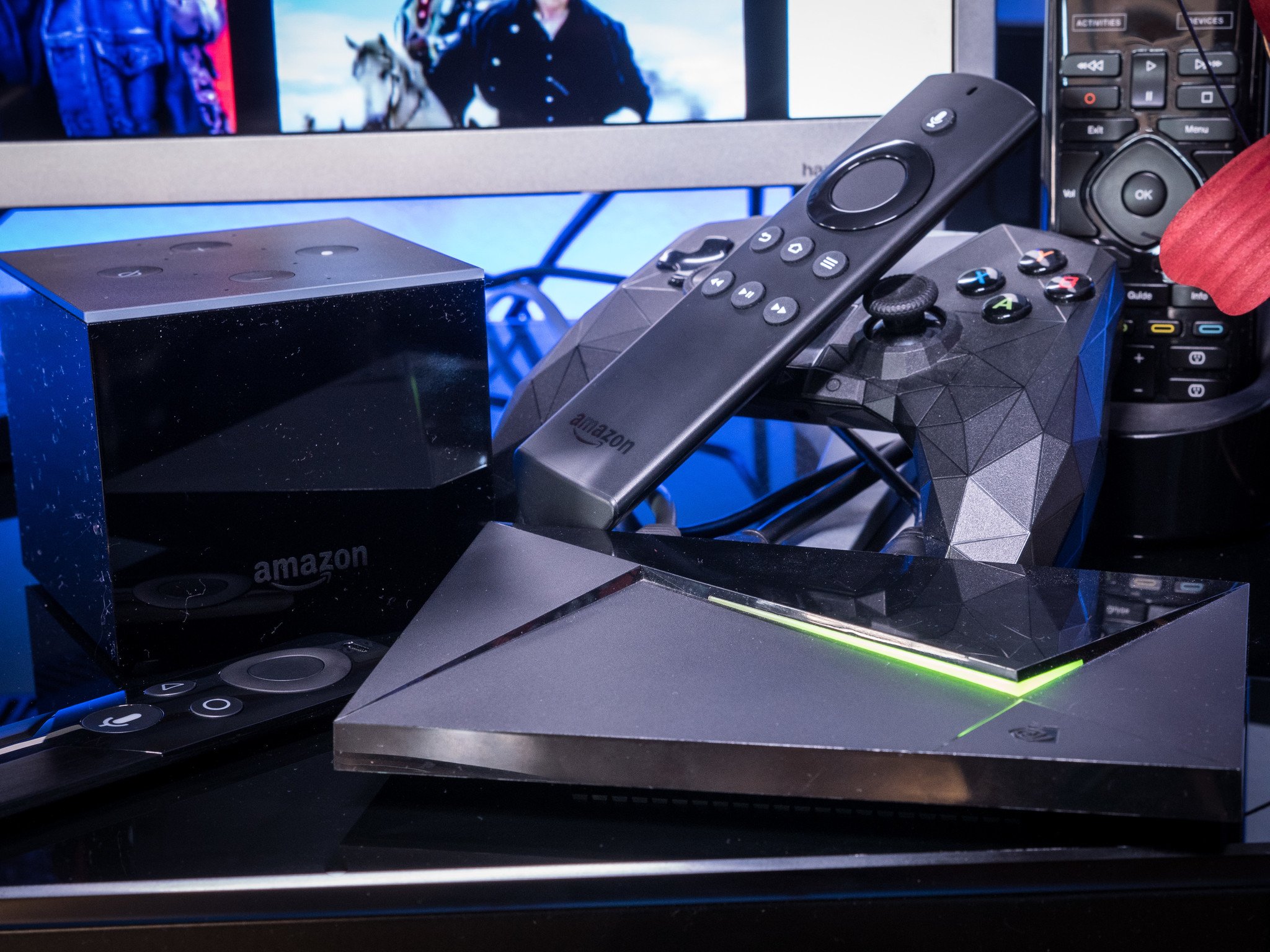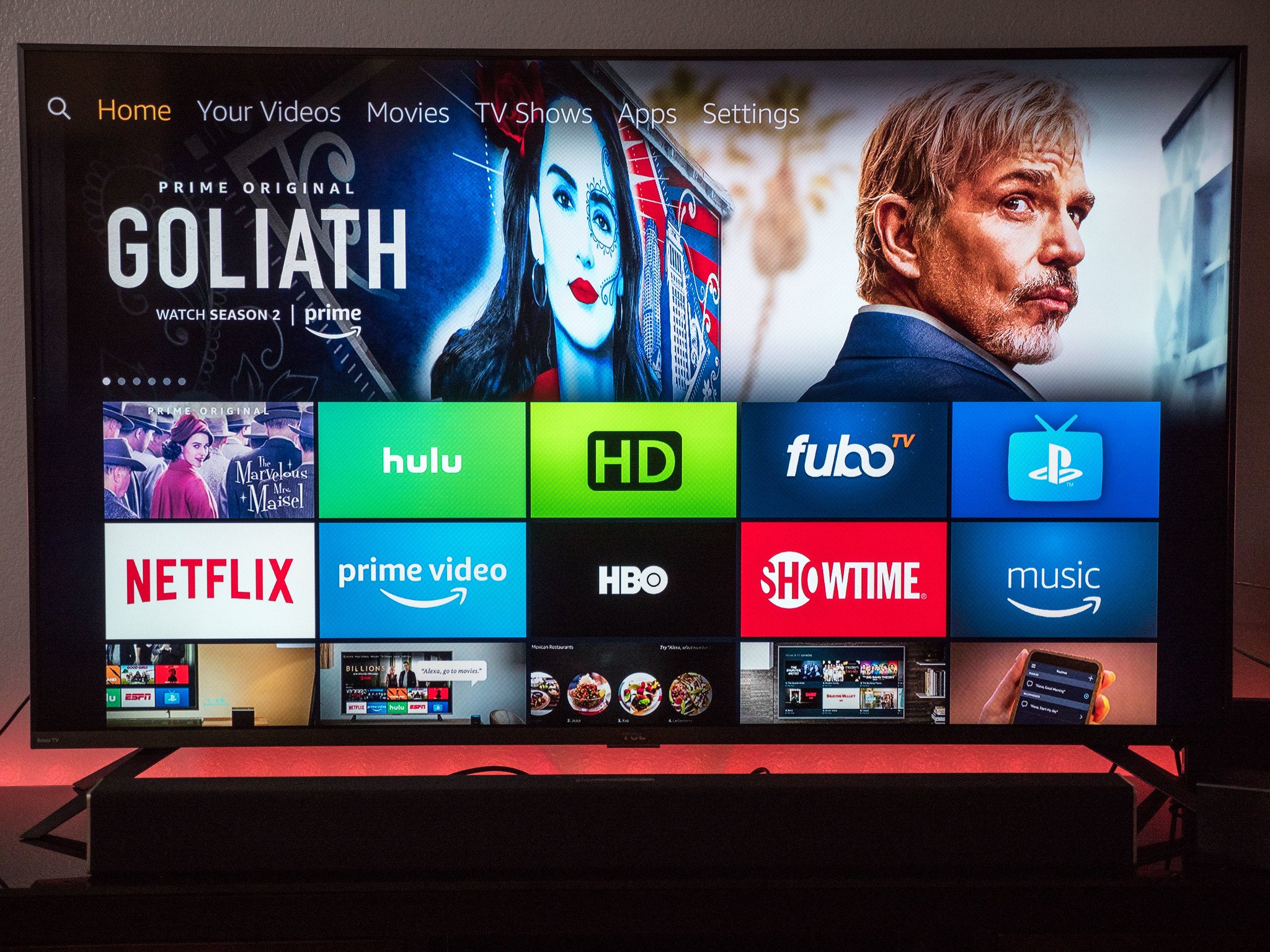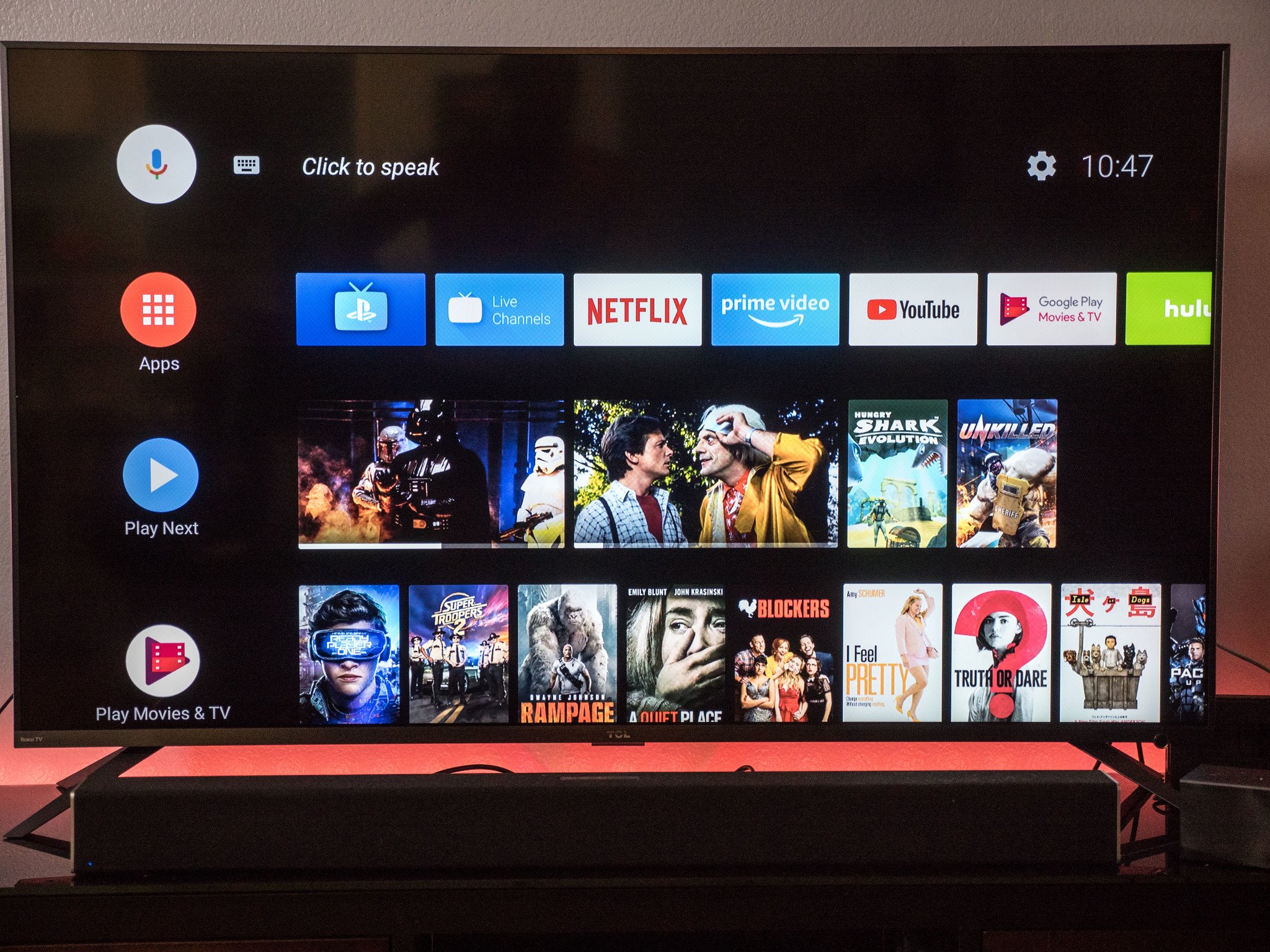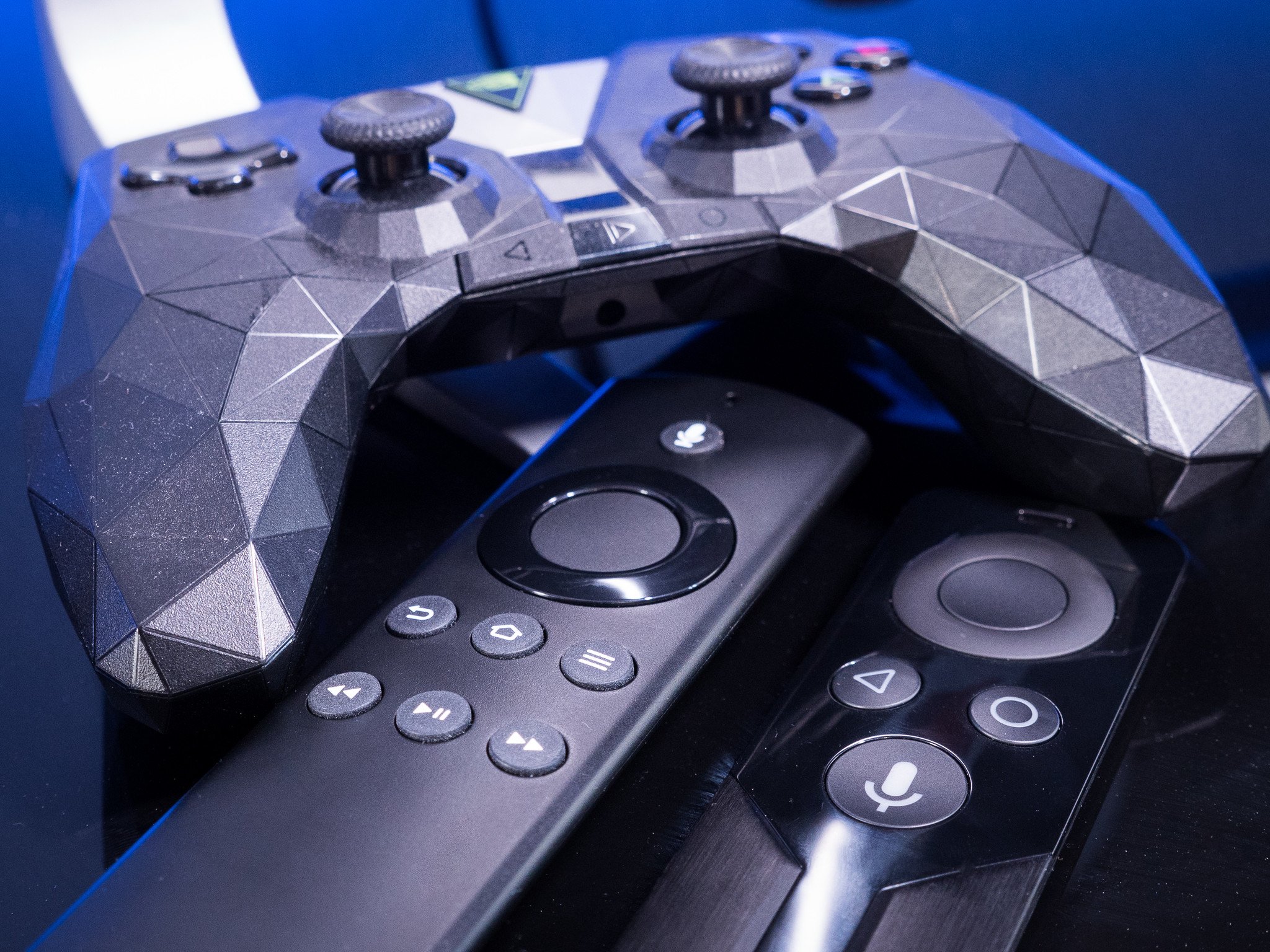Amazon Fire TV Cube vs. Android TV and NVIDIA Shield
These are two very different devices, so by all means let's compare them

It's tempting to put the Amazon Fire TV Cube into the same basket as the NVIDIA Shield TV . Both are at the top of their respective lines. (In fact, Shield TV remains the only Android TV box we recommend.)
But these also are two very different devices. One, a Honda Civic. Relatively inexpensive and available damned near everywhere. The other? A little more classic Mustang. Powerful, meant for a different kind of driving (and arguably for a different kind of driver), and a little more scarce.
Sure, both are cars, just like both the Amazon Fire TV Cube and NVIDIA Shield are Android devices. But they are not the same thing in the slightest.
Let's take a look.
More: Read our full Fire TV Cube review
Also: Amazon Fire TV Cube vs. Roku Ultra
And: Amazon Fire TV Cube vs. Apple TV 4K
Specs and hardware
| Category | Fire TV Cube | NVIDIA Shield TV |
|---|---|---|
| Row 0 - Cell 0 | Row 0 - Cell 1 | Row 0 - Cell 2 |
| Price | $119 | $179 |
| Max resolution | 2160p (4K) | 2160p (4K) |
| Operating system | Fire OS 6 (Android 7.1) | Android TV (Android 8.0 Oreo) |
| Processor | Amlogic S905Z | NVIDIA Tegra X1 |
| GPU | Mali-450 MP3 | NVIDIA Maxwell 256-core |
| Storage | 16GB | 16GB |
| RAM | 2GB | 3GB |
| External storage | microUSB | USB-A |
| Bluetooth | BT 4.2 | BT 4.1-LE |
| Wifi | 802.11ac | 802.11ac |
| Ethernet | Adapter included | Ethernet port |
| Dolby Atmos | Yes | Yes |
| Dolby Vision | No | No |
| HDR 10 | Yes | Yes |
| CEC Control | Yes | Yes |
| Amazon Alexa | Built-in | No |
| Google Assistant | No | Via voice remote Hands-free via gaming controller |
| Internal speaker | Yes | No |
| Private listening | Via Bluetooth | Bluetooth/headphone on remote |
| See at Amazon | $119 | $179 |
Looking at the basic specs, this much is clear: NVIDIA Shield TV is much more powerful than the Amazon Fire TV Cube. Better processor, better graphics, and a touch more RAM.
Shield TV also is a good bit older. While it received a minor refresh in 2017 (with a new remote control and 16GB of storage the new standard, and only option), it's largely the exact same box as what was released in 2015. But unlike a lot of tech that's inching toward its third birthday, Shield TV still holds up really well. And it should. Because it was built for more than the most casual of gaming in addition to streaming video in 4K.
Get the What to Watch Newsletter
The latest updates, reviews and unmissable series to watch and more!
No, Shield TV was also meant to handle NVIDIA's GeForce Now game streaming. That's why it has so much power under the hood, and why it's more expensive. It's also why it has a full Ethernet port in the back — it's that much easier to run it straight into your router and minimize latency and maximize speed. Fire TV Cube requires you to use an included adapter to do that, and it's a pain.
On paper, it's no contest. NVIDIA Shield TV, aging as it may be, is more powerful.
Shield TV also has a couple of its own USB-A ports. (That is, full-size USB.) The most common use is for external storage. Plug in big-ol' hard drive and go to town with local video or music or photos or whatever — or just use it for extra system storage. (I'm using a 1TB drive for local DVR of over-the-air shows via Plex and HDHomerun.) You also can use the USB for keyboards or mice or whatever other weird combination you can come up with.
And for what it's worth, the Shield TV game controller is just way cooler than Amazon's.
And one way Shield TV absolutely wins out? Both the voice remote and gaming controller can control the overall volume of your setup. Fire TV Cube requires you to either use your voice — or another remote control.


Fire TV Cube vs. Shield TV — software
Fire TV Cube isn't only meant to push you toward Amazon content — whether it's included for free with Amazon Prime, or Amazon Channels, or something you'll just rent or buy a-la-carte. OK, it's mostly meant to do that, of course. And Amazon's content stable is really deep these days, and so it's a great portal into all that.
Plus, the Amazon Appstore has all kinds of other games and apps and utilities.
Android TV is a fuller OS than Fire TV, but it's not as simple for non-nerds to use.
Shield TV is a Google Play-enabled device, so you've got everything Google can throw at you. That also includes Amazon Video, too.
Unfortunately it's not total reciprocity. You won't find Google Play Movies & TV on the Amazon Appstore, nor is there a proper YouTube app. (You can, however, still search for and watch YouTube content via a browser on Fire TV, which works fine, but it's just not the same.) On the Shield TV side, DirecTV Now is missing, and nobody has a good reason why .
All in all this one really just comes down to what you prefer. The new Android TV user interface is pretty sparse. Fire TV OS is busy, but full of great content. And, yeah. A lot of it is Amazon's.

Alexa vs. Google Assistant and home control
One of the big selling points of Amazon Fire TV Cube is that it's got Amazon's Alexa assistant built in. No having to hold down a remote control or anything. Just talk to it. And then it can control damned near anything connected to your TV, thanks to CEC and new infrared emitters. A great addition in 2018.
NVIDIA Shield TV mostly can do the same, though with some caveats. First, while it does have CEC support (so it can do things like turn the TV on and off by itself), it doesn't have IR support in the same way. (It'll handle volume controls.) That's maybe not a huge deal, though. Shield TV also has Google Assistant (Google's own excellent version of Alexa) built in, though not in the box itself. For that'll you'll need to hit the voice button on the remote. Or, if you prefer hands-free Google Assistant, you'll need to have the Shield TV with the gaming controller. (I'd just go ahead and spring the extra $20 and get both .) Then all you have to do is say "Hello, Google" within earshot of the gaming controller, and Assistant pops up on the TV.
So which should you choose?
Are you way into Google and Android and love Chromecast (both Shield TV and Fire TV work as Chromecast targets, but the former works better and faster) and want something more powerful that can handle some real gaming?
Do you want a device that can deal with network-attached storage and play nice with Plex and basically is more powerful in every way you can think of?
Then you want Shield TV.
Do you want something that's $70 less and can play games (but not as impressively) and has access to all kinds of movies and TV and music and apps and really just want to watch some stuff without thinking too much (or paying too much) for it?
Then you want Amazon Fire TV Cube.
Either way, you'll get a lot of great content. The question is how you can to go about it, and how much you want to spend.











